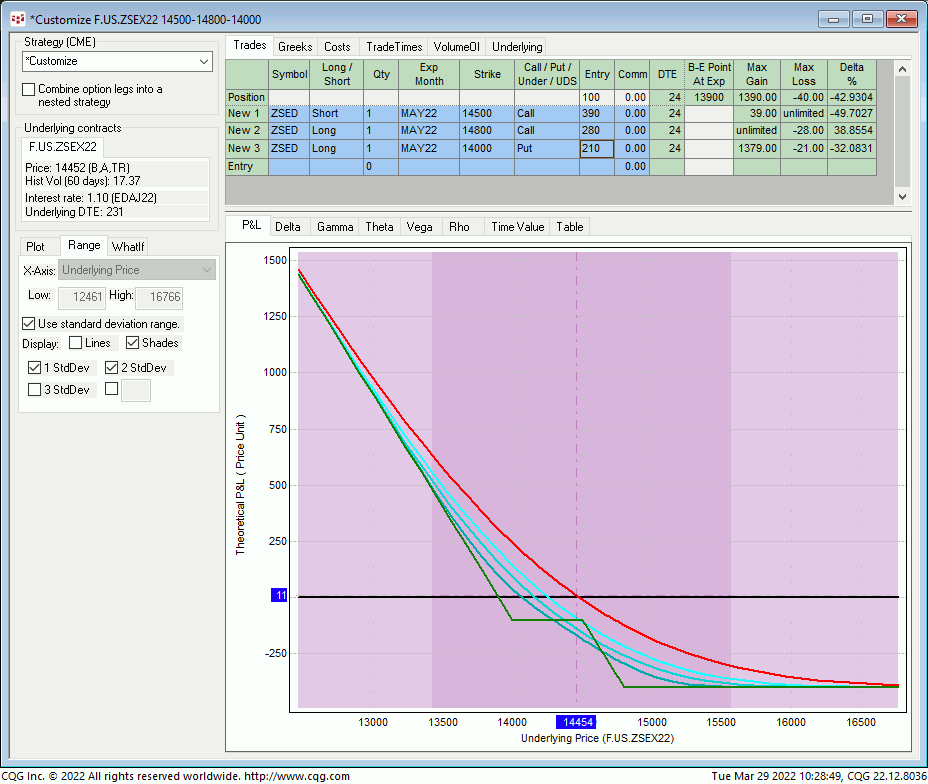
MAY SOYBEANS
Today’s break below 15-Mar’s 16.39 smaller-degree corrective low and our short-term risk parameter confirms a bearish divergence in daily momentum. This mo failure identifies 23-Mar’s 17.37 high as one of developing importance and clearly THE level this market now needs to recoup to render this sell-off attempt a corrective event and reinstate the secular bull trend. Per such, 17.37 becomes our new short-term risk parameter from which non-bullish decisions like long-covers, cautious bearish punts and early bear hedges can be objectively based and managed.
On a broader basis, the key question is whether last week’s 17.37 high completed a major 5-wave Elliott sequence from 09-Nov’s 12.04 low or not. Such a debate is not uncommon and why we try to rely on facts like smaller- and larger-degree risk parameters rather than personal, subjective wave counts. And the fact of the matter is that today’s momentum failure is sufficient to identify last week’s 17.37 high as one of developing importance and a reliable level around which to base non-bullish decisions. But it is NOT of a sufficient scale to conclude the end of the mega-bull.
Minimally, commensurately larger-degree weakness below 25-Feb’s 15.79 next larger-degree corrective low remains required to consider the rally from 09-Nov’s 12.04 low complete. And even then, such sub-15.79 weakness would only satisfy the first and possibly second of our three key reversal requirements. A subsequent and potentially extensive corrective retest of the high would being lying in the weeds thereafter. Per such, a bullish policy remains intact for long-term commercial players with a failure below 15.79 required to threaten or negate this call enough to warrant moving to the sidelines.
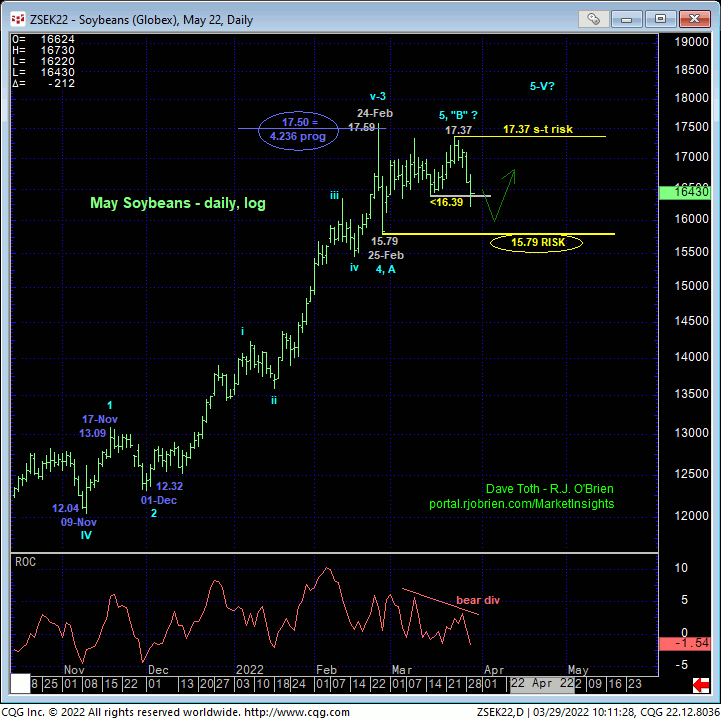
The magnitude and dominance of the secular bull market is clear in the weekly log chart below where today’s continuation of this month’s thus-far-mere-lateral behavior falls well within the bounds of a mere corrective burp. A failure below 15.79 could/would flip the script however, especially given historically stratospheric sentiment/contrary opinion levels fully expected to warn of and accompany this market’s inevitable major top and reversal. The market just hasn’t provided the evidence on a scale necessary yet to start preparing for such a major turn.
These issues considered, shorter-term traders have been advised to move to a neutral/sideline position as a result of today’s bearish divergence in momentum. Longer-term commercial players are OK to pare bullish exposure to more conservative levels, effective acknowledging and accepting whipsaw risk, back above 17.37, in exchange for deeper nominal risk below 15.79. A failure below 15.79 WILL threaten the long-term bull enough for even commercial players to move to the sidelines and for producers to establish bear hedges to reduce or circumvent the depths unknown of a correction or reversal lower that could be major in scope. Needless to say, a recovery above 17.37 will confirm this month’s price action as corrective, reinstate the secular bull and expose potentially steep gains thereafter.
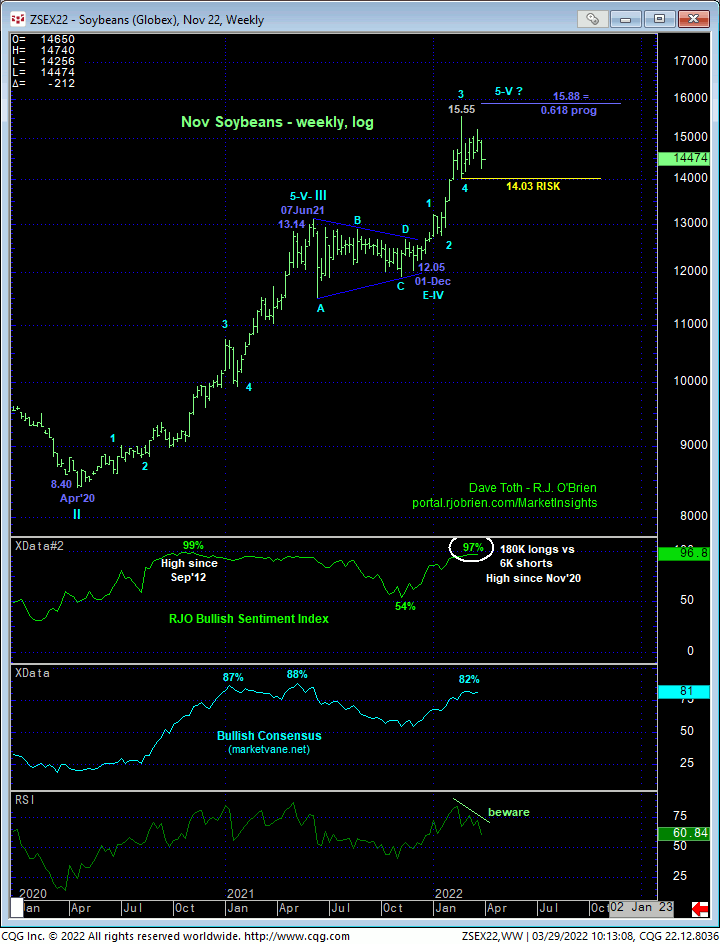
NOV SOYBEANS
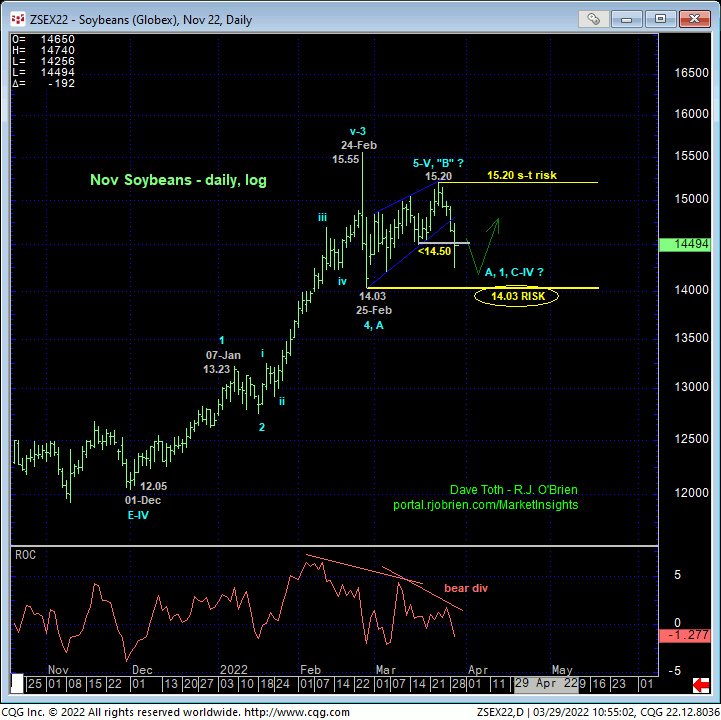
The technical construct and expectations for Nov beans is identical to that detailed above in May with today’s momentum failure below 16-Mar’s 14.50 corrective low defining last week’s 15.20 high as one of developing importance and our new short-term risk parameter from which non-bullish decisions can be objectively based and managed by shorter-term traders with tighter risk profiles. From a longer-term perspective however, commensurately larger-degree weakness below 25-Feb’s 14.03 larger-degree corrective low and key long-term risk parameter remains minimally required to threaten the secular bull market sufficiently for even longer-term commercial players to move to a neutral/bear-hedge position.
In effect, we believe this market has identified 14.03 and 15.20 as the key directional triggers heading forward and the levels traders can objectively toggle directional biases and exposure around commensurate with their personal risk profiles. From a long-term perspective, bull hedges should remain intact for end-users with a failure below 14.03 required to defer or threaten this bullish need enough to warrant paring or neutralizing these hedges. For producers, now that the market has provided some semblance of a top, even an interim one, we have the levels required from which to more objective structure bear hedges and identify the specific risk of doing so. We discuss two of these strategies below.
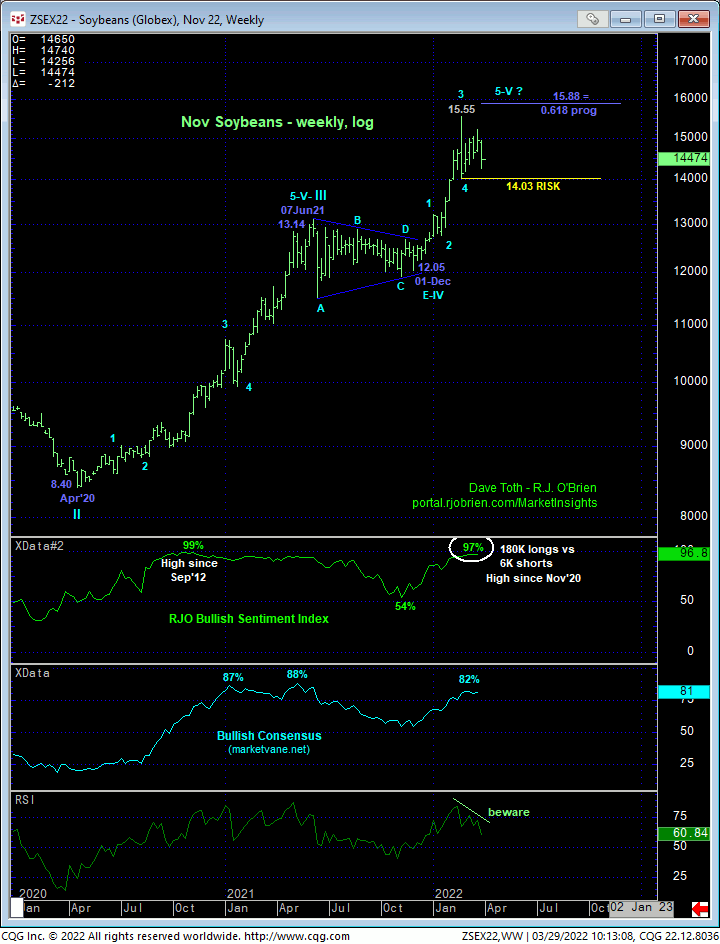
PRODUCER BEAR HEDGE STRATEGY 1: MAY SHORT-DATE 14.60 – 14.20 PUT BACKSPREAD
As discussed above, the market hasn’t weakened on a scale sufficient to conclude the secular bull market’s end. Per such, producers need to consider the risk/cost of a bear hedge if the underlying bull trend resumes. We also know that this week’s crops reports are some of the biggest of the year and have the potential to impact this market significantly, EITHER WAY. This put back spread is structured to position for a MOVE AWAY FROM current levels, either in the resumption of the secular bull trend OR a bigger reversal lower.
This strategy involves selling 1-unit of the May 14.60 Short-Dated Puts for around 48-cents and buying 2-units of the May Short-Dated 14.20 Puts around 29-cents for a net cost of around 10-cents. This strategy provides:
- a current net delta of -24%
- favorable margins
- fixed, maximum risk/cost of 10-cents on ANY rally above 14.60
- fixed, maximum risk of 50-cents if the underlying Nov contract settles at 14.20 at expiration 24 days from now on 22-Apr
- virtually unlimited, dollar-for-dollar downside hedge protection below its 13.70 breakeven point at expiration.
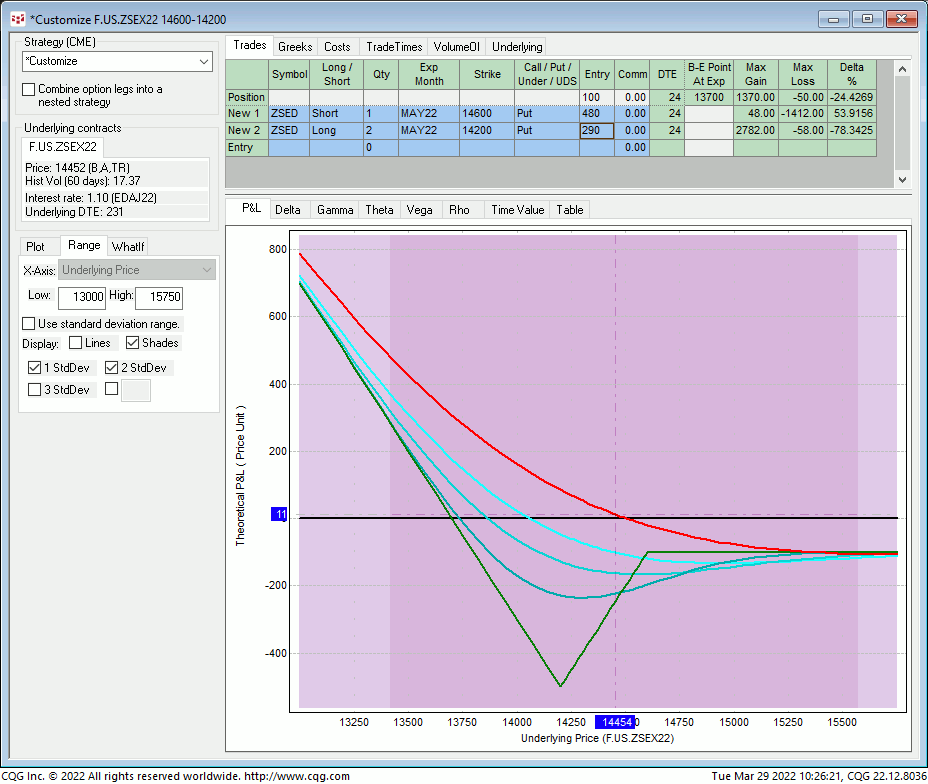
PRODUCER BEAR HEDGE STRATEGY 2: SHORT MAY SHORT-DATED 14.50 – 14.80 CALL SPREAD / LONG MAY SHORT-DATED 14.00 PUT “COMBO”
This strategy involves selling the May Short-Dated 14.50 – 14.80 Call Spread for around 11-cents and buying the May Short-Dated 14.00 Puts around 21-cents for a net cost of about 10-cents. As the P&L graph below shows, this strategy shifts the greatest risk/cost of 40-cents to a resumption of the secular bull trend. In exchange, the benefit is a closer breakeven point of 13.90 at expiration. This strategy provides:
- a current net delta of -43%
- favorable margins
- a risk/cost of 10-cents if the underlying Nov contract settles anywhere between 14.50 and 14.00 at expiration 24 days from now on 22-Apr
- fixed,
maximum risk of 40-cents
on ANY resumption of the secular bull trend
- this allows the producer’s cash position to continue to participate in the bull
- virtually unlimited, dollar-for-dollar downside hedge protection below its 13.90 breakeven point at expiration.
For both of these strategies, producers also have the option of paring or neutralizing these hedges if/when the Nov contract recovers above our 15.20 short-term risk parameter that would reinstate the secular bull, thereby trimming losses to those shown at expiration in the P&L graphs. Please contact your JO representative for updated bid/offers quotes on these strategies and good luck on Thur’s numbers.
